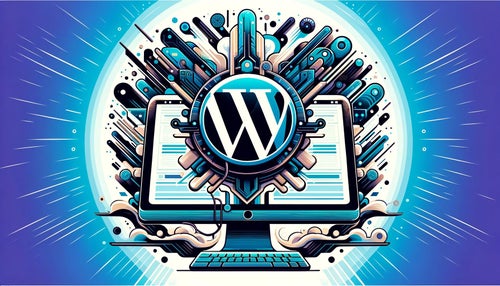Darsazma News Hub
Your go-to source for the latest news and insightful information.
WordPress Development: Where Chaos Meets Creativity
Unleash your creativity in chaos! Discover expert tips and tricks for mastering WordPress development like never before.
Understanding the WordPress Ecosystem: Navigating Chaos with Creativity
The WordPress ecosystem is a vibrant and dynamic landscape that offers an extensive array of tools and resources for users of all skill levels. Understanding its intricacies is essential for successfully navigating this ever-evolving platform. To appreciate the chaos and creativity that defines WordPress, one must first recognize the diverse elements within its ecosystem:
- Plugins: Enhance functionality and extend the capabilities of your site.
- Themes: Provide aesthetic appeal and customizable layouts.
- Community: A vast network of developers, designers, and users who contribute knowledge and support.
To harness the potential of the WordPress ecosystem, embracing a mindset of creativity is crucial. Start by experimenting with different themes and plugins to find the perfect combination that suits your needs. Additionally, engaging with the WordPress community can lead you to valuable resources, innovative ideas, and collaborative opportunities. As you explore this chaotic yet beautiful landscape, remember that the key to success lies in your ability to adapt and innovate.

Top 10 Essential Plugins for Streamlining Your WordPress Development Process
When it comes to WordPress development, efficiency is key. Utilizing the right plugins can significantly streamline your workflow, making the development process smoother and more productive. In this article, we will explore the top 10 essential plugins that every developer should consider integrating into their toolkit. From debugging tools to performance optimizers, these plugins will help you tackle various challenges faced during development.
1. Yoast SEO - Essential for optimizing your site’s visibility on search engines.
2. Elementor - A powerful page builder that allows for easy design and layout customization.
3. WP Debugging - A crucial plugin for debugging and troubleshooting any issues.
4. Advanced Custom Fields - Perfect for creating custom fields to enhance your content management.
5. UpdraftPlus - An essential backup solution to protect your work.
6. WP Super Cache - A caching plugin that boosts your site’s loading speed.
7. Contact Form 7 - An easy way to manage multiple contact forms.
8. MonsterInsights - Simplifies Google Analytics integration for better tracking.
9. WooCommerce - If you are developing an e-commerce site, this is indispensable.
10. Smush - Helps optimize images without sacrificing quality.
How to Balance Design and Functionality in WordPress: Tips for Creative Developers
Balancing design and functionality in WordPress is essential for creative developers who want to create visually appealing and user-friendly websites. To achieve this, start by establishing a clear vision of your site’s purpose. This involves understanding your target audience and the key actions you want them to take. After defining these aspects, prioritize them in your design process. Utilize a combination of responsive design elements and user-friendly navigation to ensure users can easily interact with your content.
Moreover, consider leveraging WordPress plugins that enhance both aesthetics and usability without compromising performance. For instance, implementing optimal image compression can significantly improve loading times, which is essential for overall site functionality. Additionally, ensure that your design elements, like typography and color schemes, complement the user experience rather than distract from it. By following these tips, you can create a harmonious balance between design and functionality, leading to a more engaging and effective website.